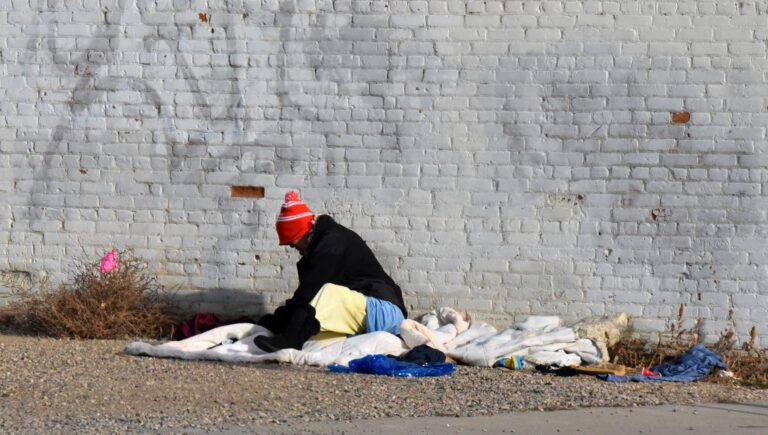
After a nearly yearlong project that worked to identify the impacts, contributing factors, and consequences of homelessness in Prince Albert, Dr. Chad Nilson presented the findings of the Homelessness Action Initiative to City Council on Monday and recommended three steps the City can take towards building solutions.
“Some of the key themes coming out of that initiative were the fact that it is a chronic problem, it is a very complicated problem, and if we properly frame the problem under a domain of chronic risk, we will be in a much better position to solve a lot of the challenges that are impacting this community as opposed to just relying on the blanket statement of homelessness,” explained Nilson.
Nilson recommended the City create a Chronic Risk Solution Forum that would coordinate support from other community organizations and levels of government and immediately begin action on solutions to problems identified in the initiative. He also called for the Mayor’s Office to consider establishing a Housing Committee.
Nilson said immediate solutions are already in place, like the creation and operation of the YWCA’s cold weather shelter and the implementation of a permanent chronic and acute risk facility that the City has begun exploring. He said the biggest challenge is working to end the fragmentation of homelessness supports in the community.
“It is really unfortunate and a symptom of the great problem,” he said. “We do not have the connectivity and collaboration that we require to actually get a handle on some of these challenges.”
Nilson said the report that has come out of the Homelessness Action Initiative puts solution builders, like human service agencies and Indigenous governments, in a position to get some of the needed work done. He suggested that the City be a major player in the effort to end homelessness, but not the only player. Ideally, he explained, the City would help bring organizations together to talk about creating and implementing solutions.
According to Nilson, the reality is that there are multiple agencies in Prince Albert that are commanding dollars for homelessness but none of them are working on solutions with each other.
“All of these partners exist in their own silo, they exist in their own funding streams, mandates, and work plans and there is nobody that really pulls them together into a single space,” he said. “I do believe for now, the City can provide that.”
Coun. Ted Zurakowski voiced his agreement with Nilson’s suggestion that the City needs to act as the glue that brings the human service agencies together.
“We as the corporation of the City need to be involved in setting the playing field, getting the experts into a conversation and getting them engaged,” said Zurakowski. “We can’t do it ourselves. This is our community and certainly we have a responsibility, but those with the funds and the expertise are not in this room.”
Nilson said that at the end of the day, the learned experience that has come out of the project – identifying the problems as a community and finding solutions as a community – can be used as a teachable moment on how to handle other issues in the City like gangs, crime, drugs, and violence.
The recommendations brought forward by Nilson were carried by City Council after a unanimous vote during Monday’s Executive Committee meeting.
In the Fall of 2021, the City of Prince Albert, supported by the Living Skies Centre for Social Inquiry, in partnership with the Prince Albert Community Advisory Board on Homelessness, launched the Homelessness Action Initiative. After representatives from the human services, homelessness, and business sectors gathered to conduct interviews and discussions with individuals facing homelessness, the stakeholders found that many contributing factors, consequences and impacts of what is perceived to be homelessness, are actually more attributable to unabated chronic risk.
“Some of the most pressing problems impacting individuals and the community include conditions of mental illness, addiction, negative behaviour, and trauma. The complexities of these conditions, mixed with poverty, unaffordable housing, barriers to support, a lack of transportation, abandonment, and social stigma, make for a very dynamic array of problems to understand and address,” Nilson wrote in his report.
Due to the severe complexity of these conditions, the Homelessness Action Initiative report found that a systematic solution process with multiple community stakeholders is required to begin to move forward.
